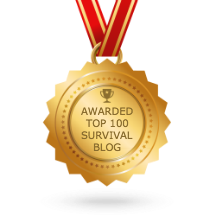You wake up in the middle of the night, and there’s no electricity. Thunderous crashes sound from outside. Screams echo from down the street. There has been a biological attack in your town. The worst has actually happened. What should you have done to prepare? What do you do now?
 Surviving Doomsday provides tips and techniques to help keep you and your family alive in the event of mass warfare.
Surviving Doomsday provides tips and techniques to help keep you and your family alive in the event of mass warfare. This guide covers the following and more:
Biological & Chemical Attacks - How to survive in the event of a biological or chemical attack
Fallout Preparation - What to do before and after you become contaminated
Quarantine Rooms - How to set one up and how to use it
Food Storage - What to stockpile in the event of an attack
Bugging Out - What you need to know if you must leave your home
Weather - How to forecast the weather using only your senses
Home Defense - Weapons and tools needed to keep you and your loved ones safe
*** Also included is a special bonus section about using herbs as highly-effective survival medicine.
This guide is a must-read for any family that wants to be prepared for a potential biological or chemical attack.








